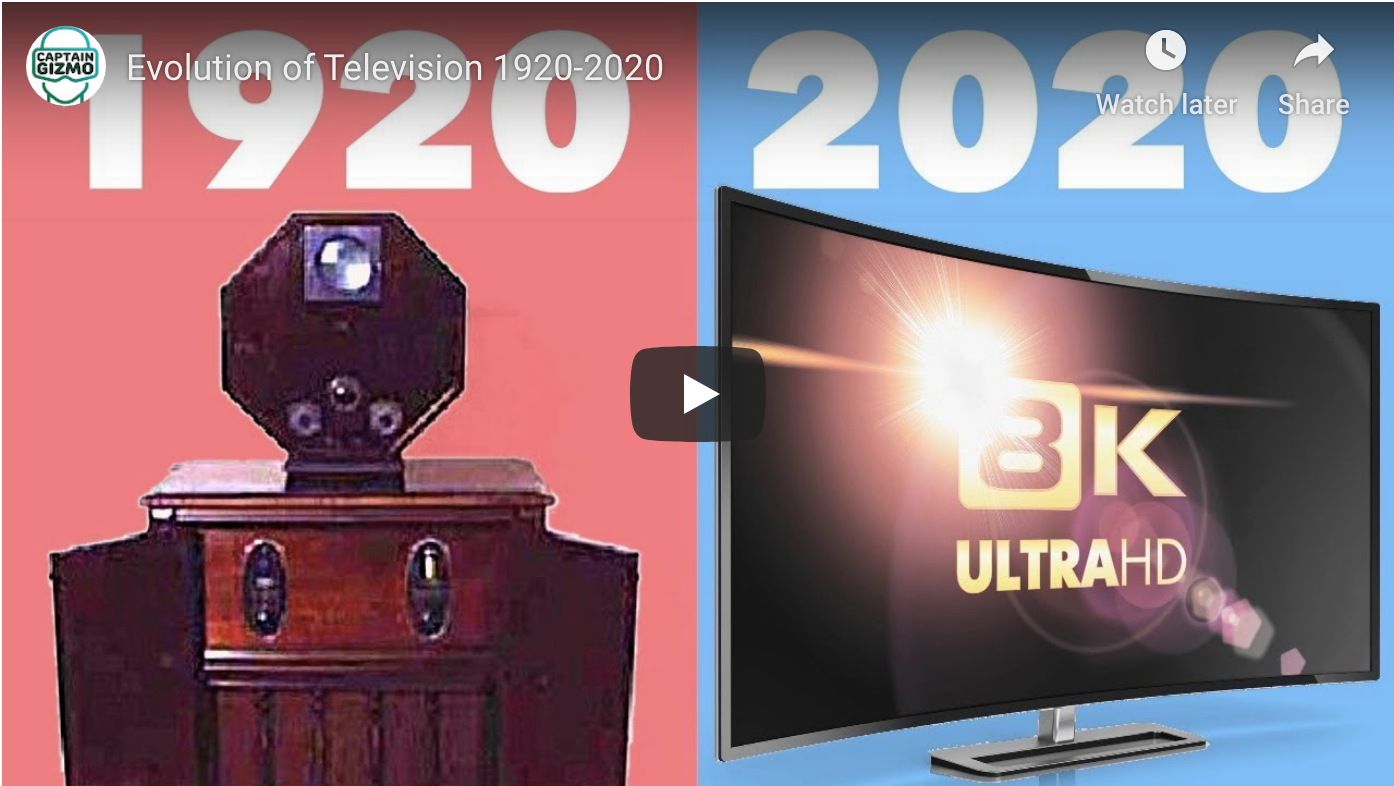In 100 years, the TV has taken many shapes and sizes. Here’s the history of the television, from the 1920s to today.
1920s
The 1920s gave us the mechanical television. The first model had a small display on the right, and a huge cabinet. These first TVs were very simple, in comparison to our technology today. They implemented peculiar shapes. Such as the octagon television. Although the technology was impressive, the video quality was not. Facial features were not recognizable unless makeup was worn in a specific way.
1930s
In the 1930s we saw more refined televisions. With better designs and resolution. This decade saw a giant leap in video quality. From 100 scan lines at the start of the decade to 405.
1940s
The 1940s brought us even higher resolutions. Including, the NTSC standard, of 480 lines of resolution and better audio. In the 1940s it was difficult to produce CRT screens larger than 12 inches. So big screen TVs implemented projection techniques.
1950s
The 1950s brought us the short-lived porthole televisions. But most importantly, it brought us the NTSC color standard. But, not many color televisions were sold until the following decade.
1960s
The sales of color TVs boomed in the 60s. They were now more affordable and the colors were more vivid. The high-end TV sets also included a new invention. The remote control.
1970s
The 1970s brought TV designs for every taste and need. There was the upgradeable television with easily accessible circuit boards. The futuristic televisions. Which implemented curvy design patterns. The colorful TVs that looked more like toys. And the portable combos. Which normally included radios and cassette decks.
1980s
The 1980s was the end of the TV as furniture era. These were replaced with color projection TVs with larger screens and minimalist cabinets. The Space Command was one of those color projection TVs. The 1980s gave way to the first LCD TVs. They were tiny and pixelated, but it was a huge step forward. Portable CRT TVs were a lot more affordable and included additional functions.
1990s
This decade was all about Sony’s Trinitron technology. As Sony’s patent had run out, all competitors were free to use the technology. TV/VCR combos became really popular in the 1990s. They included FM radio and VCR. In the 1990s, Casio continued to improve their portable LCD TVs. A preview of one of the biggest tech of the following decade was introduced at the end of the 1990s. The flat HDTV. Priced around $7,000.
2000s
Throughout the 2000s CRT TVs were still very popular. As they were inexpensive and could access HD channels using a converter box. During this decade, LCD tech was finally able to compete with Plasma. Giving us LCD HDTVs. Then LED TVs arrived. Which were superior to both. A few brands experimented with ambience lighting. To make the TVs more immersive. Through the decade, HDTVs became pretty smart. They were able to display content from your computer. As well as connect to different services on the internet.
2010s
We started the 2010s with the best combination of tech money can buy. 4K, LED, And 3D. Which all had just been introduced. Curved screens became the premium feature for a few years. It was meant to reduce glare and improve immersion. By taking advantage of our peripheral vision. This works well for computer monitors. But it is barely noticeable on TVs. Something truly impressive was the introduction of wallpaper TVs. These are almost as thin as a credit card. The latest feature is ambient mode. Which lets you match your TV to your decor. It allows you to display your TV as art, or to match your wallpaper.
2020s
2020 promises many new technologies. Such as the rollable TV. It is completely hidden when it’s off and when it’s on, it grows to the size of the content or application. This is great for calendar and music apps. And avoids the black bars in extra-wide movies. The transparent glass TV is another discreet TV technology. But it will likely be used more for decoration and art, than for entertainment. While the double sided TV will be great for gaming and for commercial applications. Tech is changing really fast, and so are our TVs. What do you think is next, for the evolution of television?

